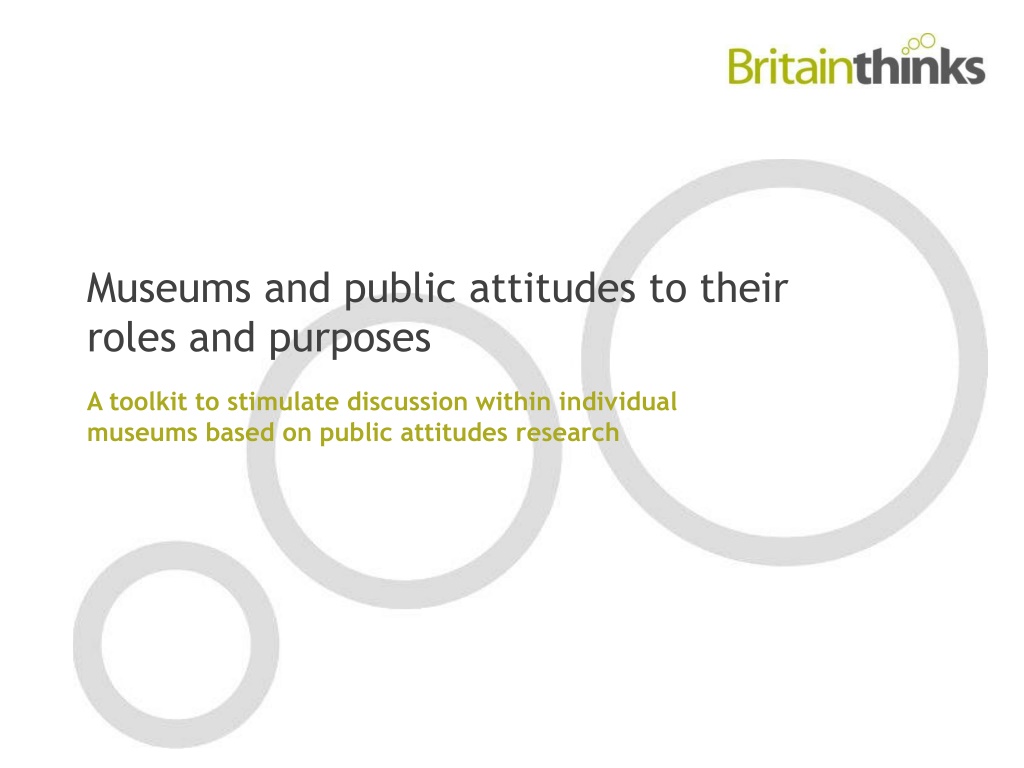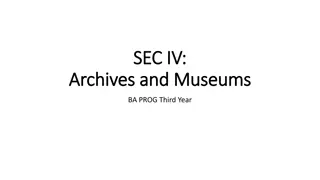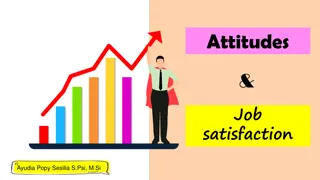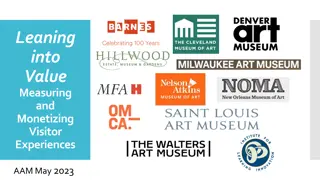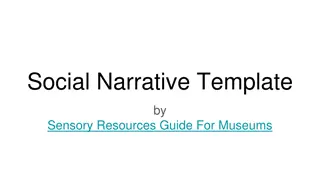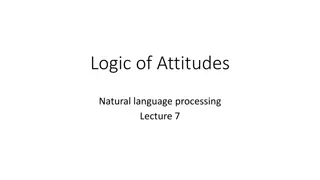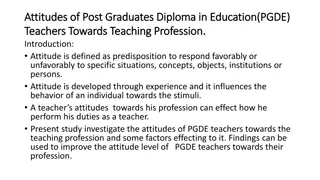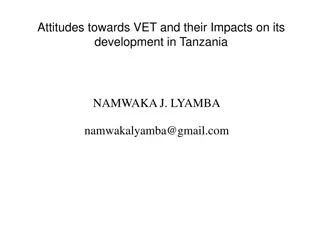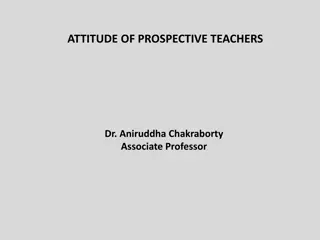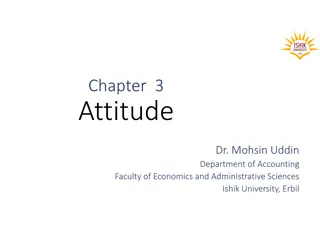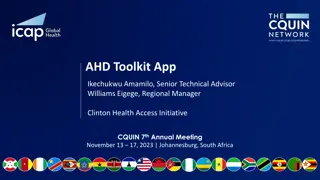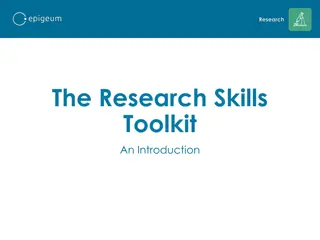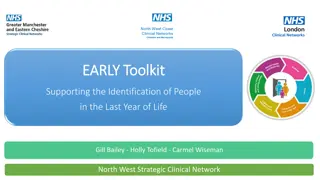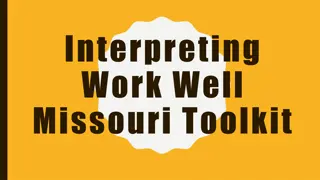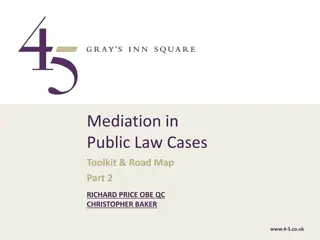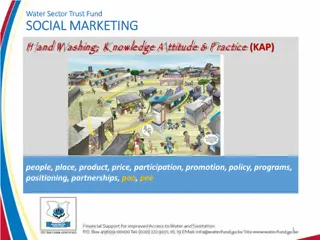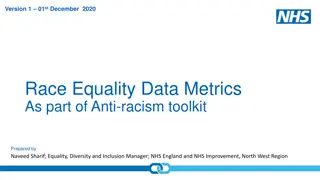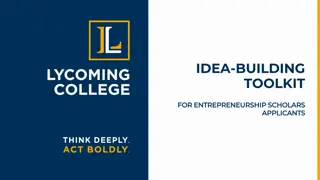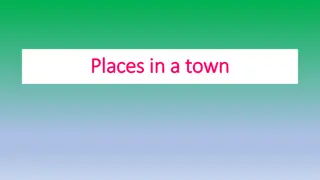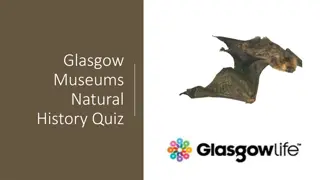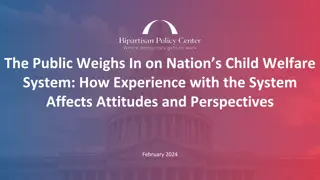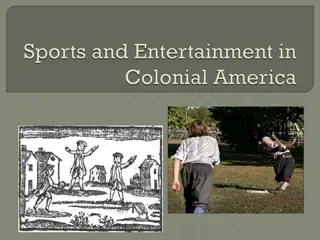Public Attitudes Towards Museums: A Toolkit for Discussion
Explores the results of public attitudes research on museums, highlighting the emotional attachment people have towards museums and the divergent views on their potential roles and purposes. The toolkit aims to stimulate discussions within individual museums based on these insights and questions arising from the research.
Download Presentation

Please find below an Image/Link to download the presentation.
The content on the website is provided AS IS for your information and personal use only. It may not be sold, licensed, or shared on other websites without obtaining consent from the author. Download presentation by click this link. If you encounter any issues during the download, it is possible that the publisher has removed the file from their server.
E N D
Presentation Transcript
Museums and public attitudes to their roles and purposes A toolkit to stimulate discussion within individual museums based on public attitudes research
Contents Introduction Expanding the scope of consultation Overview of public attitudes & stakeholder research Insights to stimulate discussion Insights & questions to consider Trust Interactivity Accessibility Communications and language
Overview of the research In early 2103 BritainThinks was commissioned by the Museums Association to conduct a programme of research into public attitudes to museums and, in particular, their potential purposes and role in society. The insights from the public attitudes research were then shared with and deliberated on by - a range of professionals who are outside the immediate museum sector but still have a stake in the future roles and purposes of museums. Both stages of this research programme were designed to inform and enrich the sector s thinking about the future of museums and, in particular, the development of the Museums 2020 vision.
Overview of research findings The public attitudes research revealed that citizens have a real emotional attachment to museums for a number of reasons, including their perceived trustworthiness and unique ability to perform certain functions. It also suggested that there were points where public attitudes departed from the Museums 2020 discussion paper s vision for the future roles and purposes of museums (http://www.museumsassociation.org/museums2020/11122012-what-the- public-thinks) Some purposes were seen as essential for museums to hold Care and preservation of heritage (national and local) Entertaining education for all children Trusted sources of information/learning for all adults Some were seen as priority purposes Promoting economic growth (esp. attracting tourists) Facilitating expert/academic research Others were seen as low priority Bringing the community together Helping the vulnerable While two possible purposes for museums were challenged by the public Providing a forum for debate/argument Promoting a political/subjective viewpoint Non-sector stakeholder attitudes to the future roles and purposes of the museums largely mirrored the public s, though their resistance to low priority and challenged purposes was more qualified.(http://www.museumsassociation.org/museums2020/what-our-stakeholders-think)
Insights to stimulate discussion The insights emerging from this deliberative research have already stimulated extensive discussion and debate at a sectoral level. This toolkit is designed to stimulate discussion about the implications of the research within individual museums. It highlights the insights from the research and proposes some questions that might be useful as a starting point for discussion.
Trust: insight from the research Museums are seen as incredibly trustworthy. This level of trust can help museums fulfil two of their perceived essential purposes , i.e. providing reliable information and educating/inspiring children With contemporary or controversial subjects, museums are more likely to be trusted on subjects that are directly relevant to the focus of the museum. Museums are seen to be presenting just the facts and collections are often regarded as evidence for historical events. There was no appreciation that museums are not objective, nor any recognition that the inclusion/omission of collections or information is inherently subjective. For example, a science museum could acceptably tackle issues such as climate change or GM foods. Public trust is an increasingly rare quality in an environment where the public doesn t trust government, media or business. A key part of being trusted is not being seen to lead people to a particular conclusion, rather display the evidence and let people decide on the merits of that evidence
Trust: questions to consider Why does trust matter to this institution? Are we behaving in a way that enhances public trust? What are the particular topics/themes that the museum can be trusted to talk about? Who could we partner with to help us explore potentially difficult issues?
Interactivity: insight from the research The public recognise that museums can achieve their essential purposes most effectively by being interactive and engaging. Recent visitors applaud progress in this area and can cite examples of great engaging displays. There is some feeling amongst the public and stakeholders that not all museums have fully embraced this opportunity, with some thought to be stuffy and passive. The rapid evolution of technology is exciting and something that museums will benefit from embracing. BUT there is an anxiety about museums going too far with technology replacing one of the other essential purposes which is to hold collections and preserve heritage
Active learning and Interactivity: questions to consider Which specific aspects of the museum and its collections could be more engaging, interactive and involving to encourage active learning? To what extent are we embracing technology and the opportunities that this affords for making our institution more engaging, entertaining and stimulating? How effectively are we communicating our progress in this area? Particularly to people who don t visit museums?
Accessibility: insight from the research Accessibility is seen as essential for all museums. A core requirement of museums is to be open and welcoming to everyone in society. At its basic level this is about affordability (preferably free), being open and welcoming to everyone. An increased emphasis on accessibility is primarily interpreted as about increasing the opportunities for people with disabilities to access the museum and its collections. This is largely thought to be addressed by legal obligation. But there is support for going further than the mere legal requirement by helping to make exhibitions more easy to engage with by people with physical or mental disabilities. The public consider accessibility to be about facilitating inward access rather than out-reach. A key concern is that museums expertise is not about the specific needs of different communities. Those needs can be better addressed by other organisations. Museums should strive to work in partnership with other organisations to enable greater accessibility for people with additional needs. Additionally in times of increased austerity, the public worry about museums resources being spread too thin .
Accessibility: questions to consider What are our aspirations in terms of accessibility? How do we define accessibility and are we clear about the implications of that definition? What are our visible and invisible barriers to accessibility? Do we have improving accessibility as a key strategic aim that cuts across everything we do so that it is part of our life blood? Are we actively seeking partnerships with relevant organisations to help improve accessibility? And improve our understanding of what this means to different groups?
Communication & language: insight from the research The public were very consistent in prioritising a range of potential social purposes for museums, with a clear sense of those that are essential and in essence the definition of a museum, through to some that were challenged quite strongly. Through the research programme it became clear that communications and language play a vital role in helping to evolve pubic expectations and perceptions of museums and their purpose in society. In seeking to build greater confidence and latitude in museums ability to contribute to wider societal issues, communications should work with the grain , building on the very real perceived strengths, particularly that of trust.
Communication & language: insight from the research Communication and language going with the grain would support rather than undermine the perception of museums as trustworthy sources of information and positive, welcoming and engaging places for adults and children alike. For instance, people would prefer: Communication to be neutral or, if a clearly controversial issue, balanced and present both viewpoints. Communication not to be final but open and encouraging of thought and reflection. Communication not to seek argument or hostile debate but calm, quiet reflection . Communication not to be politically live or suggesting controversy, e.g. religion or gay marriage Communication to be sensitive around potentially disturbing issues.
Communication & language: Questions to consider How can we most effectively communicate our vision and values? Particularly in areas where the public are concerned? Should we re-frame our communications? Are there aspects of our messaging that are obstructive to achieving our overall objectives? What are these words/phrases and what alternatives could be used? Are there any areas in which we appear to be too opinionated rather than stimulating thinking and discussion? If and when we tackle contemporary or controversial topics, how can we make sure that we don t undermine public trust? With contemporary subjects, how can we we position the arguments in as balanced and objective a way as possible? Who could we work with in partnership with to talk about contemporary and / or controversial subjects in a relevant way?
